Oh, the mighty zipper.
It sure beats all those lacings one used to have to do up.
Of course, I’m kind of fond of lacings.
But, I’m also fond of zippers. Especially ones with fun pulls, or edgy metal zippers.
There’s a variety of zippers out there. This is just an overview of the most common ones and a little about choosing the right zipper for your project.
Personally, I don’t think there is strictly a right or wrong zipper for anything. However, there are definitely some zippers that work better than others in some situations. And some zippers that are more appropriate than others, in certain situations.
Parts of the Zipper
A typical zipper has a few standard parts.
There’s the tape, which is what is used to fasten the zipper to the garment or accessory.
There’s the teeth. Also called coil or chain by some manufactures. And those are what are linked together to make the zipper close.
There’s the zipper slider which has the mechanism inside it that actually links the teeth together to close the zipper.
And there’s the Zipper pull which is what you grab onto to make the zipper slider move up and down the teeth.
At the top of a zipper, typically, there are two zipper stops. These are the top stops. They prevent the slider from going off the rails so to speak.
At the bottom of a zipper, there’s either a bottom stop (as in a standard zipper). Or, there’s a Pin and Box stop, which is used in a separating zipper (like what you might find on your jacket).
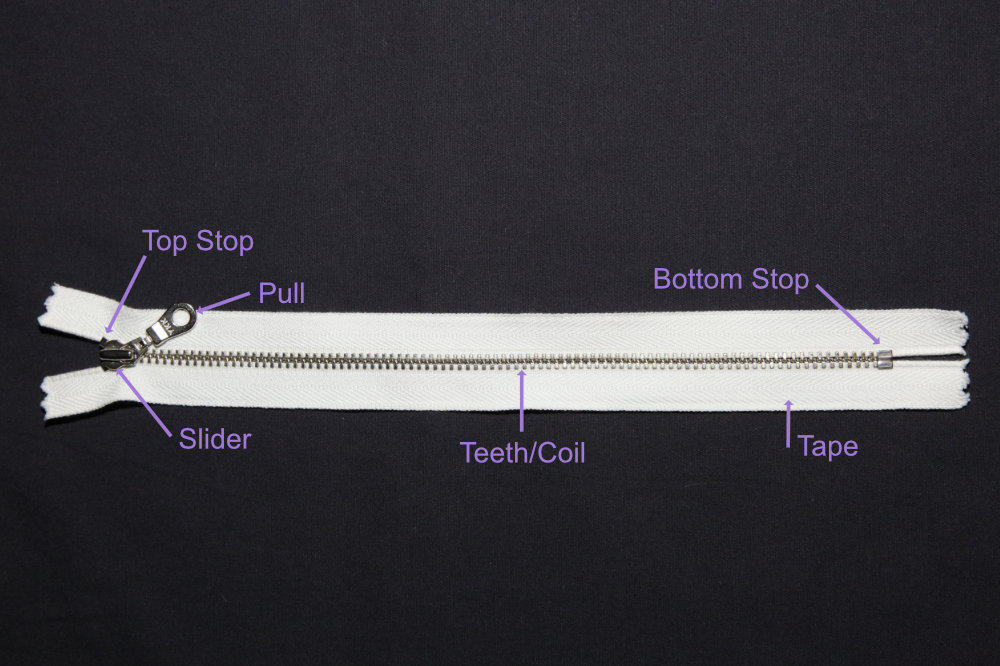
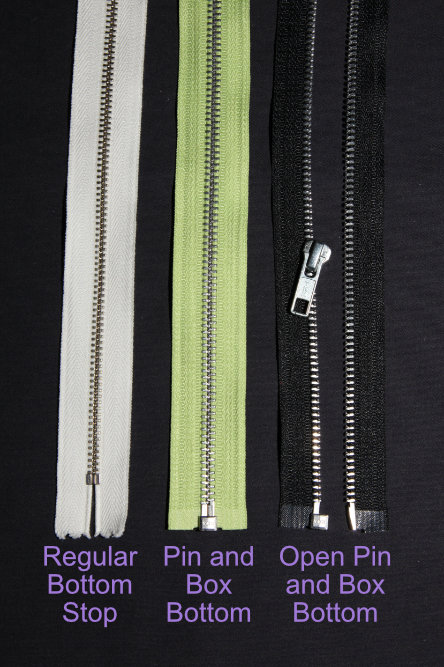
Zipper Specifications
Zippers are sized by length, Coil (teeth) size, type, and function. More on type and function later. Zipper teeth can be many sizes. Generally the smaller the teeth the more “delicate” the garment or accessory. That’s not really the right word. Most pants, tops, skirts, and such have smaller teeth. Like a #3 coil. Jackets and bags might have #5. They come even bigger. And maybe in some cases smaller. The length of a zipper is measured from zipper stop to zipper stop, including the stops. So, a 7″ zipper would have 7″ of length from the bottom of the bottom stop to the top of the top stop.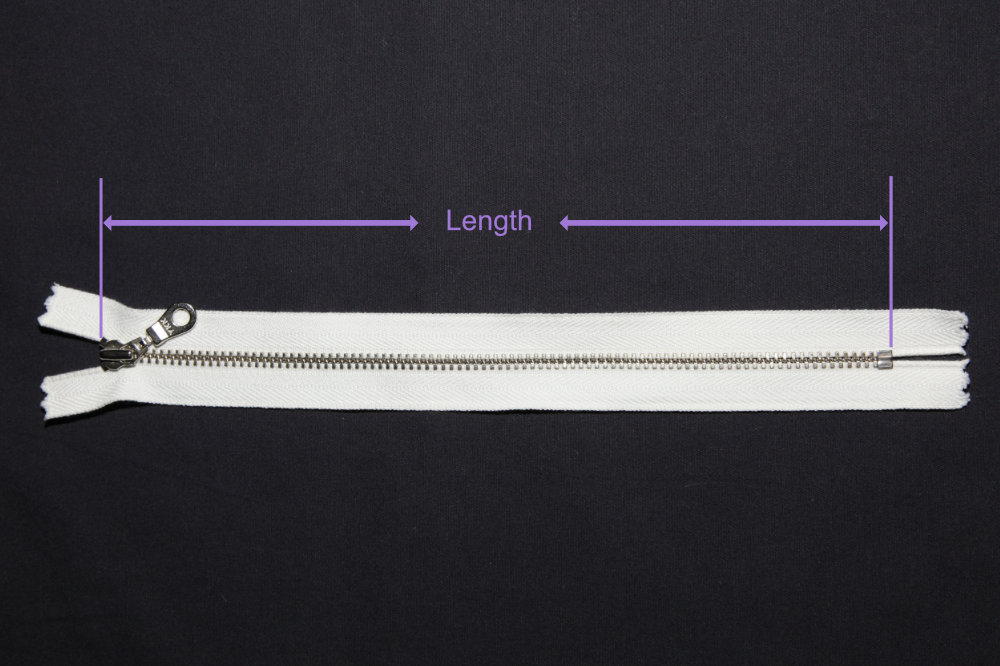
The zipper tape extends beyond the top and bottom stop by about an inch on either end (except in separating zippers). And it’s length is not included in the zipper length.
I’ve seen zippers in length from 5″ to 72″.
That being said. You can shorten zippers. Metal and nylon coil zippers generally have metal top and bottom stops. And you can actually install new metal stops along your zipper if needed.
You can also shorten a zipper by tacking (sewing a bar of thread) around the zipper at the length you want the slider to stop.
And, you can get nylon coil zipper tape with teeth and associated pulls and create your own zippers.
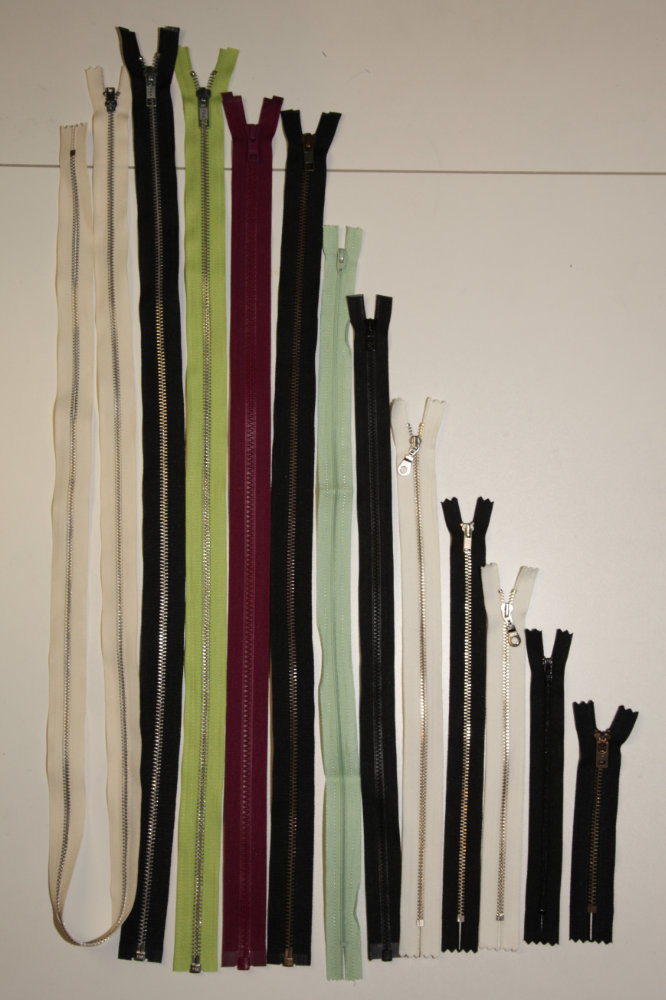
Zipper Varieties
The differences in zippers are largely due to the differences in the above parts.
Zipper Tape
In most common zippers, the zipper tape is made of polyester.
You can get cotton tape, but it’s much harder to find. I have found some cotton or organic zippers on Etsy.
There are other use-specific types of tape as well, such as vinyl and nylon. These might be used for waterproofing or wind breaking.
It’s important to note that if you can’t find the tape in the color you want, dying polyester tape is more difficult than cotton since polyester dye requires heat.
Zipper Coil (Teeth)
There are three main materials for zipper coils: metal, plastic, and nylon.
Nylon
Nylon coil is probably the most common type of zipper you’ll find. It’s available in fabric stores in many varieties (More on the types of zipper in a bit) and lengths.
There are a a few different sizes you’ll see for nylon coil. The most common I’ve seen is #3 and #5. The #3 would be the most common for garments such as pants and shirts. The #5 is bigger and would be more appropriate for jackets and bags.
Plastic
Plastic zippers are sometimes found under “molded plastic”. They generally are bigger than nylon coil zippers.
Mostly these are used for outerwear and bags.
They offer a more casual or athletic look to whatever garment or accessory they are used in.
Metal
Metal zippers come in a few types, brass, nickel, and aluminum are pretty common.
You’ll find smaller metal zippers in clothings such as jeans, cargo pants or zippered pockets.
Larger metal zippers might be used for jackets or other accessories.
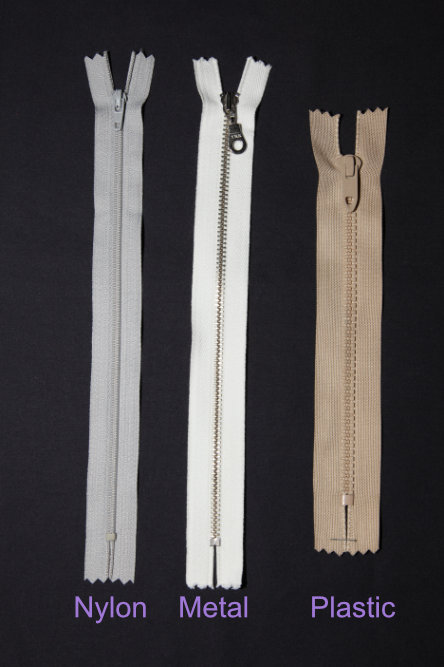
Zipper Types
There’s several types of zippers that affect function and insertion.
Standard All-Purpose Zipper
The most common zipper is the standard zipper. You’ll find it in fabric stores labeled as “all-purpose”.
It isn’t ALL purpose. Just… most… purposes…
It’s a closed end zipper so it has a bottom stop and two top stops (one on each side of teeth.
It has one slider and pull.
It’s what you would use for a skirt or pants (in typical construction). Or a zipper pouch, or slash pockets.
Separating Zipper
The separating zipper is just that, it separates. Meaning the two lengths of teeth are separate pieces. One side has a Pin bottom and the other has a box bottom.
This is used in jackets, or sleeping bags that open all the way flat.
It can also be used to create zip-in linings for jackets or trench coats.
There are a couple variations in the separating zipper.
One is a reversing pull. That means that the zipper can be zipped “normally” from either the inside or the outside of the garment. These are used for reversible garments.
Dual Slider
Another is dual slider zipper. You might see these in jackets. There are two pulls. The top pull is normal. The bottom pull acts as part of the pin and box system and when you pull it up, the zipper unzips.
You might also find dual slider zippers that don’t separate in things like luggage or other bags. And in these cases, the sliders are facing each other so you can zip the bag closed from either end of the zipper (or both and let them meet in the middle).
Invisible Zipper
The invisible zipper gets it’s name because when installed correctly, it’s virtually invisible from the outside. Only a slender zipper pull is shown.
It’s also a nylon coil zipper. Generally pretty small size teeth.
This is because the teeth are on the “back” side of the zipper. So, when installed, the zipper teeth face the inside of the garment or accessory rather than the outside.
These are commonly used in dressy pants or dresses where the edgier or less formal look of an exposed zipper is necessary.
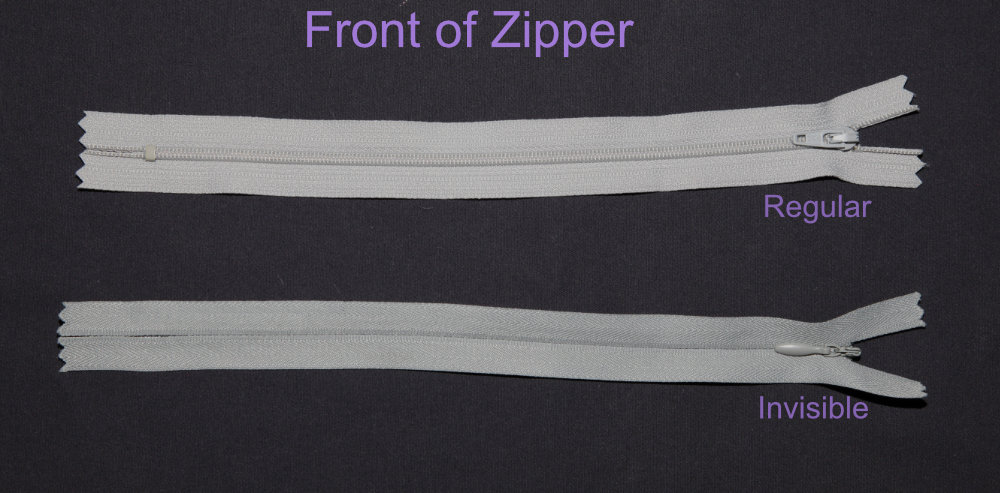
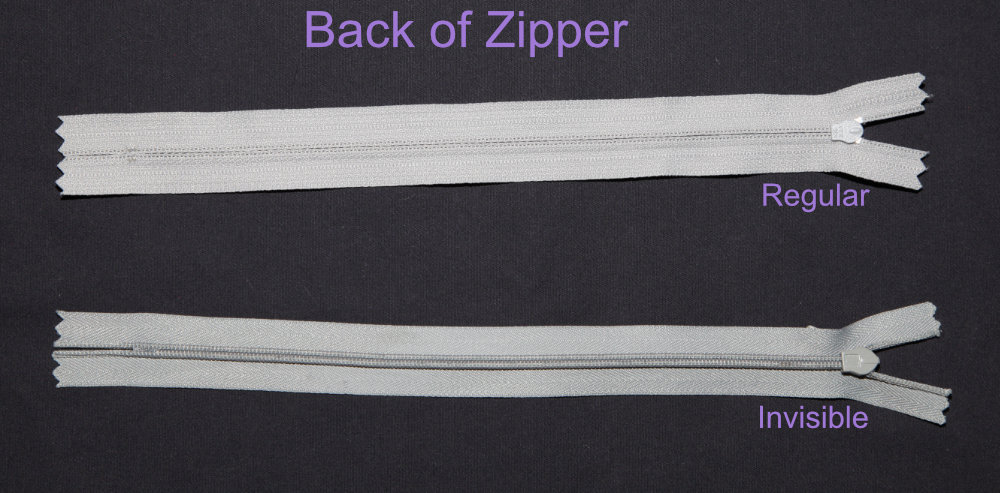
Your Choice
While you can’t really use a standard closed end zipper for something that HAS to separate, you do have a lot of choice in what zipper to use when.
Any of the three types of teeth (nylon, plastic or metal) can be installed in the same ways.
Though, if you need your zipper to be invisible, you need to install an invisible zipper.
But, the common ways to install zippers for the rest of everything are pretty much the same for each zipper.
If you’re just starting out with zippers, I recommend sewing a couple nylon coil zippers first. If you have to sew across the zipper teeth, they are the most forgiving.
Your needle will likely fall between the coils since they are more curved than in metal or plastic zippers.
And if you sew over a metal zipper tooth or stop, the metal zipper part will win, and your needle will lose. It’s best to take this super slow so you don’t shatter your needle.
Rather watch as a video? Here you go:
